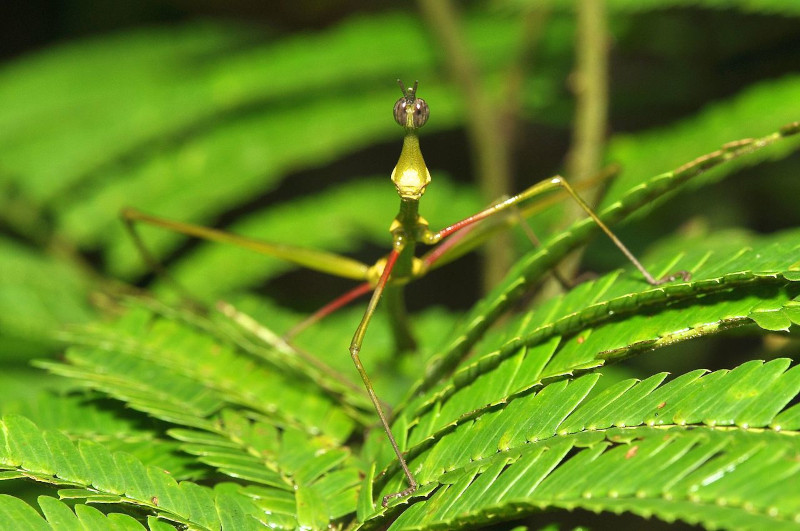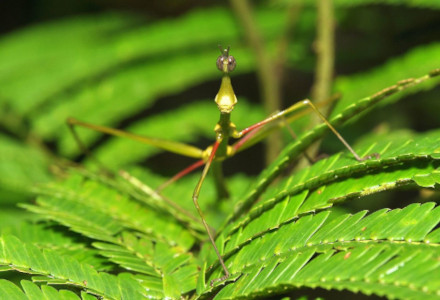
Photographer: Pavel Kirillov
CC License: https://bit.ly/3ikuUCK
Horsehead Grasshopper Facts
- Firstly, to call the amazing Horsehead Grasshopper distinctive looking would be putting it quite mildly. Further, this seemingly comical couple represents a male and female of the species.
- Much about the fabulous invertebrate may surprise you. Strangely enough, it rather closely resembles a type of stick insect. Yet despite the appearance, it is indeed a variety of grasshopper.
- It also represents only one of the more than 18,000 species of Neotropical grasshoppers around the world. Especially relevant is the strength of its hind legs. The Horsehead Grasshopper is capable of leaping twenty times its body length.
- Finally, this particular insect is provided at least some protection. This holds true because part of its range lies within a protected area. Yet it is still threatened throughout other parts of its range. These threats include climate change and habitat loss.
Related Articles
Desert Locust Rainbow Grasshopper Lichen Katydid
Horsehead Grasshopper Physical Description
Most notably, the Horsehead Grasshopper displays a fairly noticeable degree of sexual dimorphism. But this fact is not surprising, since many insects do. In its case, this manifests itself in terms of physical size and coloring.
Due to this, the females generally grow significantly larger than the males. Females often attain a length of as much as 8 in (20.3 cm). Meanwhile, the much smaller males rarely reach a length of more than 5 in (12.7 cm).
Yet the males generally appear much more colorful. Most of them usually display predominantly bright green color. The females, on the other hand, typically show a light to dark brown.
Most of all, this astonishing species remains known for its highly elongated face. Many people who encounter it believe the face resembles that of a horse. This, rather understandably, serves as the source of the common name.
- Kingdom: Animalia
- Phylum: Arthropoda
- Class: Insecta
- Order: Orthoptera
- Family: Proscopiidae
- Genus: Pseudoproscopia
- Species: P. scabra
Horsehead Grasshopper Distribution, Habitat, and Ecology
First of all, the marvelous Horsehead Grasshopper evolved as endemic to a limited portion of South America. Further, this specific area includes parts of Venezuela, Peru, Brazil, and French Guiana.
In addition, the arthropod generally inhabits a specific habitat type. Given its range, that, quite naturally, mainly consists of the South American rainforest. Fortunately, part of its natural territory also encompasses the Tambopata National Reserve, in Peru.
Furthermore, scattered individuals sometimes also inhabit regions of subtropical forest as well. Additionally, it typically only inhabits the outer boundaries of these forests. The exact reason for this also remains undetermined.
The species remains entirely herbivorous. It feeds on a wide variety plants, but primarily consumes the leaves. While feeding, the camouflage of this insect works flawlessly. It has learned to sway in the wind when perched on a limb.
Species Sharing Its Range
Jabuticaba Brazilian Wandering Spider Hoatzin
Check out our other articles on 7 Astounding Polar Creatures, Salar de Uyuni, Pinta Island Tortoise, Hooker’s Lips, Psychedelic Frogfish, Saiga Antelope, Snowy Owl

